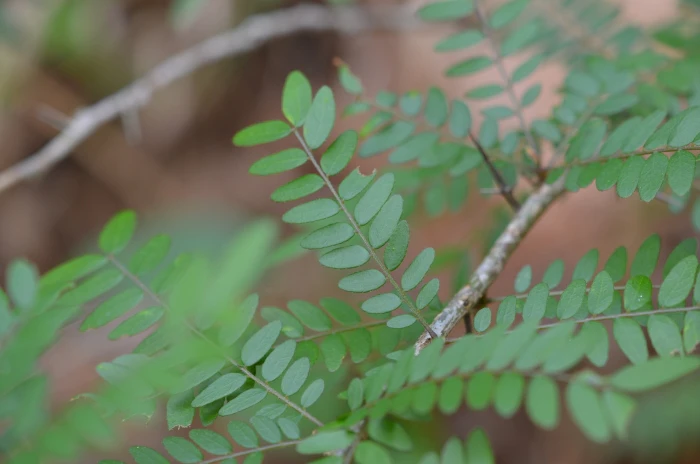Water Locust
(Gleditsia aquatica)
Water Locust (Gleditsia aquatica)
/
/

© Jody Shugart
CC BY 4.0
Image By:
© Jody Shugart
Recorded By:
Copyright:
CC BY 4.0
Copyright Notice:
Photo by: © Jody Shugart | License Type: CC BY 4.0 | License URL: http://creativecommons.org/licenses/by/4.0/ | Uploader: terrapinjoe | Publisher: iNaturalist |

























Estimated Native Range
Climate Requirements
| • Precipitation | 18" - 66" |
| • High Temp. | 64°F - 96°F |
| • Low Temp. | 6°F - 51°F |
Summary
Gleditsia aquatica, commonly known as Water Locust, is a deciduous tree native to the wetland areas such as river swamps, slough margins, and floodplains in the southeastern United States. It is typically found in states ranging from Florida to eastern Texas, extending north to Illinois, Ohio, and southwestern Connecticut. The Water Locust usually reaches a height of 50 to 60 feet and has a preference for partial sun, thriving in USDA hardiness zones 6–9. Its appearance is characterized by a relatively open canopy with pinnately compound leaves that provide a light, dappled shade. The tree produces inconspicuous greenish-white flowers in the spring, followed by flat legumes that typically contain one seed each.
The Water Locust is valued for its adaptability to wet conditions, making it suitable for planting in areas with poor drainage or in riparian buffer zones to stabilize stream banks. It is also used in reforestation projects in its native range. While it is not commonly used for ornamental purposes due to its less showy flowers, it can be a practical choice for naturalized areas. The tree requires consistently moist soil and can tolerate occasional flooding. It is relatively low-maintenance once established but can be susceptible to pests like the honey locust pod gall midge.CC BY-SA 4.0
The Water Locust is valued for its adaptability to wet conditions, making it suitable for planting in areas with poor drainage or in riparian buffer zones to stabilize stream banks. It is also used in reforestation projects in its native range. While it is not commonly used for ornamental purposes due to its less showy flowers, it can be a practical choice for naturalized areas. The tree requires consistently moist soil and can tolerate occasional flooding. It is relatively low-maintenance once established but can be susceptible to pests like the honey locust pod gall midge.CC BY-SA 4.0
Plant Description
- Plant Type: Shrub, Tree
- Height: 30-50 feet
- Width: 25-35 feet
- Growth Rate: Slow, Moderate
- Flower Color: Green, White
- Flowering Season: Spring, Summer
- Leaf Retention: Deciduous
Growth Requirements
- Sun: Full Sun, Part Shade
- Water: Aquatic
- Drainage: Fast, Medium, Slow
Common Uses
Erosion Control, Water Garden
Natural Habitat
Native to wetland areas such as river swamps, slough margins, and floodplains
Other Names
Common Names: Water Locust, Water Honeylocust
Scientific Names: Gleditsia aquatica, Asacara aquatica, Caesalpiniodes monospermum, Caesalpinoides monospermum, Gleditschia aquatica, Gleditschia carolinensis, Gleditschia inermis, Gleditschia monosperma, Gleditschia triacantha
GBIF Accepted Name: Gleditsia aquatica